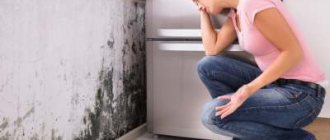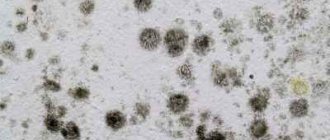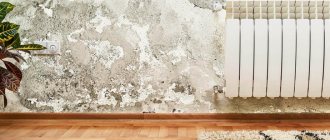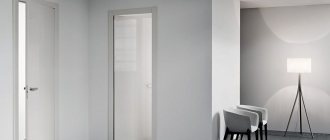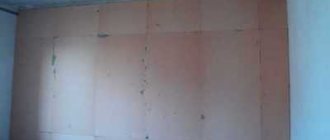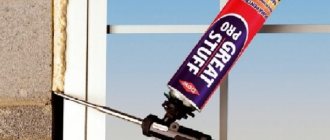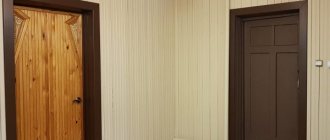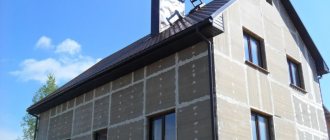Korovin Sergey Dmitrievich
Master of Architecture, graduated from Samara State University of Architecture and Civil Engineering. 11 years of experience in design and construction.
Processing concrete and wood products with liquid glass has been used for quite some time. This substance is added to cement, which speeds up the process of setting the mixture; it is used for waterproofing basements, for treating swimming pools and other hydraulic structures. Liquid glass in its original state resembles transparent or whitish crystals obtained by melting soda and silicon dioxide in certain proportions under pressure. This material was invented in the 19th century and is still actively used in construction and renovation work due to its unique properties.
For construction work, crystals are diluted with water, but most often the material is supplied in industrial packaging. When exposed to open air, LC dries instantly, forming a protective film, which allows it to be used for impregnation of products and structures in order to provide protection from moisture, fire and rotting.
There are several types of liquid glass. They are divided depending on the main substance used in the mixture.
Sodium
The formation based on sodium salts is characterized by a viscous structure, high strength and penetrating ability. It perfectly resists open fire and high temperatures, and the composition is also able to retain its shape even when the base on which it was applied is deformed.
Potassium
This material contains potassium salts. The structure of the mixture is loose, the composition has increased hygroscopicity, and forms a matte surface. Potassium compounds resist excessive heat and deformation well.
Lithium
It is used to provide the treated surface with protection from thermal effects. Produced in small batches. For some work, combined mixtures are used.
When does fungus and mold appear?
- Most often, fungus on the walls is the result of increased moisture in the apartment.
- Poor ventilation and excessive coolness can also lead to the formation of mold in a house, apartment, balcony, etc.
- Often mold appears on the walls when the apartment is located at the end.
- If metal-plastic windows are installed in the house, this problem may also arise due to the creation of a kind of vacuum in the house and disruption of air microcirculation.
Fungus on the walls appears on the wallpaper and ceiling in the form of spots of black, green and yellow. Typically, we begin eliminating mold when the damage is severe, although the fungus appears long before that.
More often, mold forms in winter, and if you dry clothes in a house with poor ventilation, then mold will definitely appear.
What can mold cause in your home?
It doesn’t matter whether you live in a wooden house or a brick one, the appearance of fungus in any type of premises has a negative impact on people’s health. What are the harms of mold?
- Development of allergic reactions.
- Decreased immunity.
- Headache.
- Exacerbation of chronic diseases of the bronchopulmonary system.
- Upper respiratory tract diseases.
Fungus in a child's room is especially dangerous, because the child's body is still developing and cannot resist at full strength. As a result, serious diseases such as asthma, urticaria and others can develop.
Fungus on the ceiling and concrete walls spoils the entire interior, because these stains can appear on the tiles in the bathroom, toilet, kitchen, or on the wallpaper, on the balcony, and even in the basement. Mold spreads quickly, and combating it must begin immediately.
Remedies for mold and mildew on walls
Today you can find a number of special preparations in stores, and you don’t have to think about what to treat the walls with. If processing is carried out during construction and repair work, use the following means:
- Dali;
- Biotol;
- "Fongifluid fungicide";
- "Olympus Stop"
These mold removal compounds are used on floors and walls and are effective and non-toxic.
If the problem arose after the house was built and repaired, use:
- Denkmit Schimmel-Entferner;
- Anlas mykos;
- Savo Przeciw Plesni;
- "Antisept";
- "Abedis."
When choosing a composition, pay attention to the surfaces for which the mold repellent is intended and make a purchase in accordance with the type of material to be treated.
Material characteristics
What is liquid glass? In scientific terms, this is a solution of sodium silicate and potassium silicate, that is, the building material in question contains the same components as ordinary glass. Another name for this material is silicate glue, which makes its use immediately clear.
Liquid glass has very high adhesive properties and is characterized by thermal conductivity - this material is often used in thermal insulation work. The insulation, in the manufacturing process of which liquid glass was used, can withstand temperatures of up to 1200 degrees Celsius!
How to deal with mold on walls
If the fungus affects surfaces covered with wallpaper, and the attack has spread widely enough, they will have to be removed. Treatment of walls against mold is carried out in stages and it is necessary to adhere to the following procedure:
- Remove old wallpaper from the walls.
- Clean off the lesions using a spatula and a stiff brush.
- Apply to the surface a special composition designed to remove residual adhesives and cement films.
- Treat the walls with an anti-mold compound following the instructions for use.
- Apply a primer with an antiseptic effect.
- Use a waterproofing compound.
- Apply antifungal primer again.
- Plaster the walls.
- Paint the surfaces with a special heat-insulating paint.
- Perform final putty.
- Re-treat the walls with primer before wallpapering.
Only after this can you start updating the room and gluing new wallpaper. But if the degree of fungal damage is not so great, such radical measures are not required. Treating surfaces with folk remedies will also help if mold on the wall in the apartment appeared relatively recently.
To get rid of mold, you will need to remove the wallpaper. Why? Without these measures, the use of chemical or folk remedies will be pointless. Antifungal agents are not difficult to find in your own home, these include:
- Table vinegar or essence.
- Any household chemicals containing chlorine.
- Manganese solution.
- Ethyl or ammonia.
- Hydrogen peroxide 3%.
The listed products will help remove fungus only on the wallpaper. If you want to solve the problem permanently, you should carry out more thorough work. Copper sulfate, used to treat walls, ceilings and other surfaces in the house, effectively helps fight mold.
Application of liquid glass outside construction
Liquid glass is used for waterproofing, improving the quality characteristics of complex/heavy materials and is considered indispensable in the construction industry. But this unique material has found its application in other areas:
- for laying linoleum, PVC tiles;
- for the manufacture of putties intended for metal pipes;
- for impregnation of fabrics and other materials in order to reduce fire hazard;
- to carry out grafting on trees, the wound surface on the tree trunk is treated with liquid glass;
- for polishing - liquid glass makes almost any surface absolutely smooth and shiny.
The use of liquid glass improves the quality characteristics of many materials, provides waterproofing, thermal insulation, and automatically carries out antiseptic work.
( 104 votes, average: 4.63 out of 5)
Artificial stone: independent production and installation
Washable wallpaper - types, features, choice and rules for gluing
Related Posts
Copper sulfate for mold and mildew
How to prepare the surface for processing
Before treating the walls with copper sulfate, you should prepare them. But first of all, remove everything unnecessary from the room: furniture, linen, household appliances and more.
Carefully inspect everything removed for the presence of mold. She can hide on the legs of the bed and sofa, on the back wall of the closet and its bottom. Things need to be disinfected. Otherwise, they may be a new source that will re-infect walls and other surfaces. And you will have to carry out all the processing and disinfection manipulations again. To prepare the walls, do the following:
- First you need to find the main source of mold. It can be in the most difficult to reach places, for example, under tiles. You need to tap the tiles; if there is a void underneath, it is likely that there is fungus there. In such areas it is better to remove the tiles. Mold can also hide under the wallpaper. They will have to be removed too.
- After mold is found and the walls are cleared of tiles, wallpaper and other coverings, begin cleaning. Take a metal spatula or stiff brush and remove all plaque. Then go over again with low-grit sandpaper.
- Next, wipe all the walls with soapy water and wait until they are completely dry. This will make treatment with copper sulfate more effective.
How to dilute copper sulfate to treat walls against mold
Copper sulfate is available in dry form, so it is diluted in water. You need to take 100 grams of blue powder and pour it into a metal container with 10 liters of water. The water should be warm. Mix the granules well in the water until they are completely dissolved.
How to treat walls against mold with copper sulfate
Pour diluted copper sulfate for wall treatment into a spray gun or spray bottle. Apply thickly to all affected areas. If you don't have a spray bottle, use a regular kitchen sponge. After 3–5 hours, copper sulfate should be sprayed again against mold in all treated areas.
This treatment is carried out 2 to 5 times. It all depends on the depth of mold damage to the walls. In the most advanced cases, it is necessary to remove a layer of plaster before treatment.
The product will dry completely only after 2-3 days. Limit your time in the contaminated room to a minimum.
Safety precautions when using copper sulfate
- Wear thick rubber gloves, a respirator or cotton-gauze bandage, safety glasses and special clothing. Tight, closed clothing with long sleeves is suitable.
- After disinfecting surfaces and walls, ventilate the room well.
- Clothes used for treatment should be washed separately from other laundry and dried in fresh air.
- If you experience slight malaise, dizziness, headache, nausea or allergic rashes, consult a doctor immediately. These may be signs of poisoning.
Tools
0 votes
+
Vote for!
—
Vote against!
Among the large number of options for waterproofing, liquid glass stands out with many advantages. We will consider the features, application and characteristics of this material further.
Table of contents:
- General concept and advantages of liquid glass
- Scope of use and types of liquid glass
- Recommendations for working with liquid glass
- Liquid glass - operating instructions and application
- Liquid glass for waterproofing - nuances in application
- Recommendations for choosing and purchasing liquid glass
- Tips for preparing solutions based on liquid glass
General concept and advantages of liquid glass
The term liquid glass refers to a solution based on water and sodium or potassium silicates. It has a viscous structure, and therefore copes well with work related to waterproofing.
If we consider the composition of liquid glass, then small crystals are easily visible in it, which, after being applied to the surface, enlarge, filling small cracks. It is thanks to this structure that liquid glass is characterized by a water-repellent and airtight effect. Liquid glass is used in a variety of fields due to its environmental friendliness and harmlessness.
If we talk about the principle of action of liquid glass, then it has adhesive ability. This manifests itself due to the fact that liquid glass molecules enter the molecules of the solid material, which do not have close bonds with each other, which penetrate into the interior of the solid molecules and thus their adhesion occurs.
Liquid glass resembles rubber, which is in a liquid state. After its application, the surface becomes water- and airtight. The composition of liquid glass includes calcium or sodium silicate, to which soda or quartz sand has been added. During the production of liquid glass, it is crushed, fired and re-crushed into a powder mass.
The liquid glass mixture has the following properties:
- water repellent - that is, water repellent;
- antiseptic - prevents the formation of bacteria;
- antistatic - no electrification;
- hardener - the material on which liquid glass is applied becomes durable;
- acid protectant;
- fireproof material resistant to fire.
This material has a large number of advantages; studying reviews about liquid glass, the following advantages are highlighted:
1. Liquid glass is a very liquid adhesion, which, due to its fluid state, can easily penetrate into the smallest pores and cracks. It also has strong adhesion to the surface and easily covers both concrete and wooden substrates.
2. The creation of a liquid waterproof film is another advantage of this material. Regardless of how liquid glass is applied, a complete and moisture-resistant surface is obtained.
3. Low consumption of liquid glass is also its advantage. Especially when it is added to cement mortar, as a penetrating type of waterproofing.
4. If we compare the cost of liquid glass with other waterproofing materials, then it successfully outperforms them, since it has the most affordable cost among alternative options.
5. Waterproofing with liquid glass has a service life of 5 years. This material gradually self-destructs, but if you cover the waterproofing with a protective layer of paint, it will last much longer.
6. It is the only insulator that allows you to work even in conditions with high humidity.
Despite the large number of advantages of liquid glass, there are also a number of its disadvantages:
1. It has a limited scope of use - it is used as waterproofing of concrete or wooden surfaces. It is prohibited to use liquid glass solution for waterproofing brick surfaces, due to their possible destruction.
2. The film that liquid glass forms is quite fragile, so it must be used as a combination of several types of waterproofing.
3. Difficulty of application - the material dries very quickly and forms a film, so work skills are required to make waterproofing efficiently.
Liquid glass photo:
Scope of use and types of liquid glass
As mentioned above, liquid glass is not suitable for all materials, but its scope of application is quite wide. Liquid glass is used in the following cases:
1. If you add liquid glass to a cement mortar, you will get a reliable coating, protected from moisture and the negative influence of groundwater, if the mortar is used to fill the foundation.
2. Liquid glass is used for waterproofing swimming pools or artificial ponds.
3. Used as an adhesive for gluing various types of building materials.
4. Used to produce mortars with fire-resistant or acid-resistant characteristics.
5. If there is a problem with mold or mildew in the house, several layers of liquid glass should be applied to previously cleaned affected areas.
6. Use a solution of liquid glass as an adhesive to repair paper, cardboard, wood or porcelain products.
7. To seal weak joints or plaster a pool, a solution of cement and liquid glass is perfect. But keep in mind that you need to work with such a solution quickly, since after a while it thickens and becomes unusable.
8. If you plan to build a house on weak soils, which will shrink in a few years, then a solution of cement with liquid glass is used for injections, which are injected into the upper layers of the soil.
If we consider the scope of using liquid glass as waterproofing, we will highlight the following options:
1. Liquid glass is used as coating waterproofing. Before installing roll waterproofing, several layers of liquid glass are applied to the surface. The solution perfectly fills all cracks and pores of the concrete surface.
2. A solution of liquid glass with cement is used to eliminate serious leaks or as waterproofing of joints in prefabricated foundations.
3. Liquid glass is part of concrete; it improves its solidity and provides waterproofing.
Two types of liquid glass are common:
- potassium,
- sodium
The first option has good adhesiveness and is used for waterproofing the foundation parts of a building. Included in antiseptic impregnations. Interacts well with mineral-based formulations.
The second type is a metal additive and helps improve the stable characteristics of glass. Resistant to acids. It does not have the typical shine of glass, so it is used as a surface coloring.
Recommendations for working with liquid glass
If liquid glass is to be applied to a surface, then it must first be diluted with water in the ratio of 200 grams of water per 100 g of material. In this case, no more than 300 g of solution will be required per square meter.
Waterproofing with liquid glass is used on walls where the plaster has weathered or on concrete walls with uneven surfaces. Using liquid glass will strengthen and level the surface, and also create a protective antiseptic layer.
There are several methods for applying this material. Before using liquid glass, the surface should be degreased, cleaned and leveled as much as possible. If impregnation of concrete is required at a shallow depth of up to three millimeters, then use a spray gun or brush. If deep impregnation of more than two centimeters is necessary, at least three layers of solution must be applied.
If liquid glass is used to waterproof a floor or concrete screed, then one liter of material is added to 10 liters of concrete mortar. Also, liquid glass is an excellent anti-corrosion impregnation; it is used to treat metal structures. To ensure the protection of the pool from water leakage, the application of a solution of liquid glass is also used. Liquid glass is part of fire-resistant paints.
Liquid glass - operating instructions and application
To prepare a solution of concrete and liquid glass, the proportions are one to ten. This mixture is used for waterproofing wells, swimming pools, bathrooms, basements and other structures made of concrete or reinforced concrete.
Applying the material is a fairly easy process, during which a protective layer is formed on the surface, which acts as a barrier to moisture penetration.
The facade of a building should not be treated with such a raster if it is planned to be painted further, since the adhesion of the paint and the wall will be low, and the paint will practically not lie on the surface.
When working with liquid glass, it is recommended to use special clothing. To make a traditional Russian stove, a solution based on cement and liquid glass is used. The ratio of components sand: cement: silicate glue is 3: 1: 0.2. The result is a mixture that resembles dough, is very easy to work with and has good performance characteristics as a material for constructing an oven.
The use of silicate glue, to which liquid glass is added, is very popular among builders. It is used for gluing tiles made of polyvinyl chloride or linoleum. Water pipes are coated with liquid glass to prevent water leakage and seal joints. To make protective non-flammable fabric, liquid glass is also used as an impregnation.
Liquid glass is a universal material that is even used in gardening. When small wounds appear on trees or bushes, they are covered with liquid glass. It is an excellent antiseptic and prevents the development of harmful bacteria.
Liquid glass for waterproofing - nuances in application
Before applying liquid glass to the surface, it must be cleaned of dust and dirt.
Then follow these steps:
1. Apply liquid glass to the surface with a brush or roller.
2. Wait 30 minutes and apply another coat. Try to do this evenly without allowing gaps to appear.
3. The next stage is preparing the protective layer. Make a regular mortar based on cement and sand. Add liquid glass to it, in a one to one proportion.
4. Stir and apply to the surface at a very fast pace. This solution should not be applied a second time, since the functions of liquid glass will not be performed.
5. Mix gradually, apply the solution to the surface using a cement spatula in a standard layer.
And remember, before using liquid glass, you should inspect it for cleanliness, foreign objects or lumps. The shelf life of liquid glass is quite long, and the temperature range is wide. Therefore, even if it is stored outside in the winter, this will not affect its quality in any way.
Let's consider applying liquid glass to the foundation:
- clean the surface from various types of contaminants using sandpaper;
- Use a roller to apply the solution evenly;
- apply a second and, if desired, a third layer after 30 minutes;
- insulate the foundation with mineral wool or polystyrene foam.
Recommendations for choosing and purchasing liquid glass
To buy liquid glass, contact any hardware store or market. Among the large number of liquid glass manufacturers, there is practically no difference in its composition. Therefore, which manufacturer to choose is a personal matter. But, in principle, even the cheapest material has the same characteristics as the expensive one.
Liquid glass price starts from $2 per 10 liters. As you can see, the material is really not expensive, but at the same time multifunctional.
If you make a choice between sodium or potassium type liquid glass, then each option has its own advantages and disadvantages.
Potassium liquid glass is used for foundations, as it is more viscous, and sodium liquid glass is used for waterproofing other construction objects.
Tips for preparing solutions based on liquid glass
1. There is an option for preparing a primer based on liquid glass. It is not recommended to treat walls with a pure solution of liquid glass. Thanks to its antiseptic properties, liquid glass does an excellent job of priming, preventing the formation of mold and mildew, and increasing adhesion.
To prepare a primer based on liquid glass, you must have:
- cement,
- liquid glass,
- water.
The amount of cement and liquid glass is the same, and the water should make the mixture liquid, suitable for applying to the wall with a roller. First, cement is mixed with water, and then liquid glass is added. To do this, use a drill or a construction mixer. It is recommended to use the solution within half an hour; if it has hardened, add a little water.
2. To prepare a waterproofing or fire-resistant solution, take a little sifted sand. Equal parts of water, cement, sand and liquid glass are mixed. This mixture does an excellent job of waterproofing wells.
3. Antiseptic solutions help prevent the appearance of microorganisms or bacteria. Its preparation is a simple process. To do this, mix liquid glass with water one to one and cover, for example, a wooden surface with this solution. This is much cheaper than traditional moisture-resistant impregnations, but no less effective.
4. To make impregnation from liquid glass, which is used to cover walls, ceilings or floors, four hundred grams of liquid glass should be diluted in one liter of water.
Liquid glass video:
Chlorine bleaches
Sodium hypochlorite is found in many bleaches and is an effective mold and mildew killer. You need to prepare an aqueous solution in a ratio of 1:10 and treat the affected surfaces, first removing any pockets of fungus.
Keep in mind that bleach vapors are poisonous; work with open windows, protecting your face with a medical mask and the skin of your hands with gloves.
How to get rid of mold smell in your home
When mold has already been defeated, its specific damp smell often remains. To get rid of it quickly:
- thoroughly ventilate the rooms;
- purchase special odor absorbers;
- cover the affected areas with soda or charcoal, and after a while remove the composition with a vacuum cleaner.
If the odor persists, check that all affected areas have been noticed and treated. If necessary, carry out additional cleaning of surfaces.
How to get rid of mold on the balcony
Fungus appears on the walls on the balcony more often than indoors. Wet weather conditions, leaking roofs and drains allow fungal spores to spread at a high rate.
- As a preventative measure, you should think about insulating the balcony, waterproofing it, and an air circulation system.
- Special primer solutions will help prevent the appearance of dampness.
- You can remove mold on a wooden balcony and prevent its occurrence using special antiseptic solutions. But their use can be harmful to the body; during treatment, think about personal protective equipment.
- If mold does appear on the balcony, it should be dealt with immediately. You can use special antifungal agents, but disinfection must be carried out first.
On wooden balconies and concrete walls it is better to use copper sulfate. To prepare a special antiseptic solution, take:
- Copper sulfate 100 grams.
- Vinegar essence 4 tbsp. spoons.
- Warm water 10 liters.
Combine all the components together, you should get a homogeneous solution, which should be heated to 70 degrees. Using a hot product helps kill all fungal spores, but after 30 days it is better to repeat the treatment.
Video on the topic
With the advent of a protective coating based on liquid glass on the construction market, consumers immediately appreciated its unique capabilities. Currently, this composition has a fairly wide scope of use. How is processing done using liquid glass and what is it?
Preventive measures against mold
In order for mold to leave your home forever, it is necessary to destroy the environment favorable to it. The rules are quite simple, by adhering to them, you can finally and irrevocably get rid of the problem:
- It is important to regularly ventilate the room. Air movement will prevent mold from surviving. The ideal option is to air three times a day for at least half an hour.
- Control the humidity in the apartment. Buy a special device called a hygrometer - a device for measuring air humidity. The optimal humidity in residential areas is 40–60%. If the readings are higher, warm up the room. Turn on the heater. Candles will also work, but you will need quite a lot of them, and such drying will also take more time. Try not to dry washed clothes indoors; when cooking, cover pots and pans with lids to prevent steam from spreading throughout the rooms. Avoid keeping flowers that need to be watered frequently. Also, if humidity is high, you should not install aquariums, decorative waterfalls, etc. at home.
- It is necessary to keep water pipes and plumbing in good condition.
- During repair work, use moisture-resistant materials and antiseptic substances.
- When installing furniture against walls, do not place it end-to-end; leave a small gap so that air can circulate between the wall and the back of the furniture. This is especially important for external walls that face the street.
- When installing plastic windows, be aware that plastic is a “non-breathable” material. You should think about the ventilation system.
The feasibility of waterproofing with liquid glass at various sites
It is popular to create waterproofing from this material, and the result is effective. It can also be selected in the following cases:
- Treatment of a concrete product located outdoors helps to obtain moisture protection, after which the item can be used under water;
- Waterproofing pools is easier with this substance;
- Treatment of basement structures helps to obtain antiseptic and moisture protection;
- Treatment of the foundation forms a film-like coating against water to protect the rest of the structure.
Waterproofing pools is easier with this substance.


